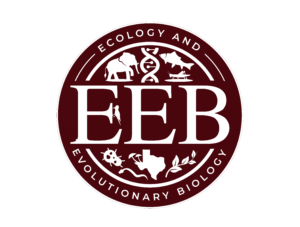 Dr. J. Baird Callicott
Dr. J. Baird Callicott
Bio: J. Baird Callicott is University Distinguished Research Professor of Philosophy and formerly Regents Professor of Philosophy at the University of North Texas. He is co-Editor-in-Chief of the Encyclopedia of Environmental Ethics and Philosophy and author or editor of a score of books and author of dozens of journal articles, encyclopedia articles, and book chapters in environmental philosophy and ethics. Callicott has served the International Society for Environmental Ethics as President and Yale University as Bioethicist-in-Residence, and he has served the UNT Department of Philosophy and Religion Studies as chair. His research goes forward simultaneously on four main fronts: theoretical environmental ethics; comparative environmental ethics and philosophy; the philosophy of ecology and conservation policy; and biocomplexity in the environment, coupled natural and human systems (sponsored by the National Science Foundation). Callicott is perhaps best known as the leading contemporary exponent of Aldo Leopold’s land ethic and is currently exploring an Aldo Leopold Earth ethic in response to global climate change. He taught the world’s first course in environmental ethics in 1971 at the University of Wisconsin-Stevens Point. His teaching at UNT includes graduate and undergraduate courses in ancient Greek philosophy and ethical theory in addition to environmental philosophy. (text and photo from Dr. Callicott’s website)
Talk Title: From the Superorganism to the Gaia Hypothesis: A Brief History of Organicism in Ecology From the Early 20th to the Early 21st Century
Abstract: The superorganism was the first paradigm in ecology principally formulated by F. E. Clements in the early twentieth century. It was supplanted by the ecosystem paradigm, introduced by A. G. Tansley and completed by R. L. Lindeman. E. P. Odum reintroduced Clementsian organicism and holism to ecosystem ecology by the mid-twentieth century. H. A. Gleason, a contemporary of Clements, who challenged his organicism and holism, was vindicated in the late twentieth century by the triumph of the flux-of-nature paradigm (clearly articulated by S. T. A. Pickett) featuring directionless change, ubiquitous natural and anthropogenic disturbance, and stochasitic assemblages of animal and plant species adapted to similar environmental gradients. The superorganism paradigm is now, however, revived in twenty-first-century Gaian science—planetary systems science—and provides norms for climate change ethics.
Website: http://jbcallicott.weebly.com/
 Dr. Sam Cushman
Dr. Sam Cushman
Bio: Sam Cushman is a research landscape ecologist at the Rocky Mountain Research Station. He got his B.S. from the Evergreen state college, M.S. from Western Washington University (forest landscape dynamics in the Russian Far East) and PhD at the University of Massachusetts (sympatric carnivores in Nepal, elephants in Botswana, salamanders in New England and birds in Oregon). He has worked for the U.S. Forest Service since 2003 on a broad range of topics related to landscape genetics, connectivity modeling, habitat relationships among other topics.
Talk Title: Population connectivity, gene flow and climate change
Abstract: Viability depends on population connectivity, which enables dispersal, demographic and genetic rescue and local recolonization. However, it has been extremely difficult to rigorously predict the processes that govern population connectivity. As a result, most estimates of dispersal, landscape resistance, barriers and corridors have been developed based on expert opinion and not validated with empirical data. I illustrate several robust ways to reliably predict population connectivity using empirical data, and explore a number of important issues related to scale, spatial error, thematic resolution and sampling regime. I then apply these principles in an example illustrating the effects of climate change on population connectivity of a species that depends on high-elevation habitats.
Website: http://www.rmrs.nau.edu/people/scushman/
 Dr. Scott Edwards
Dr. Scott Edwards
Bio: Scott Edwards is a Professor of Organismic and Evolutionary Biology at Harvard University and Curator of Ornithology in the Museum of Comparative Zoology. He received his undergraduate degree in 1986 and his PhD from the University of California, Berkeley in 1992. Scott conducted postdoctoral research as an Alfred P. Sloan Fellow in Molecular Evolution at the University of Florida, Gainesville. He was a faculty member in the Department of Zoology at the University of Washington from 1994, until 2003 when he moved to Harvard. His lab carries out research on phylogeography and speciation in birds, genome evolution during the transition from reptiles to birds, and disease dynamics, among other topics. (photo from Dr. Edwards’ website)
Talk Title: Genomic, geographic and temporal tracking of an evolving host-pathogen system
Abstract: Climate change and human-induced habitat change increase the likelihood of contact between usually isolated species as well as the spread of novel pathogens. We have been studying the evolutionary interactions between a songbird host, the House Finch (Carpodacus mexicanus), and an avian bacterial pathogen, Mycoplasma gallisepticum (MG). MG is usually found in poultry but in 1994 field scientists detected it in populations of House Finches introduced in the 1940s to the eastern US. The disease spread rapidly throughout house finches in the eastern US and is now found in all US states except a few in the southwest. Using a combination of genomic comparisons across geography, historical insights of museum specimens and experimental infections, we are reconstructing the history of spread and co-evolutionary interactions between host and pathogen. House finches from Alabama, with substantial historic exposure to the pathogen, exhibited strikingly different gene expression responses to experimental infection compared to finches from Arizona, where MG has only recently arrived. We have also investigated genome evolution in the MG pathogen during and after the host shift, and find an exceptionally high rate of evolution as well as evidence that the pathogen itself is responding to invasion of a novel host species. Our studies suggests that the House Finch-MG interaction involves immune subversion and natural selection in populations of both host and parasite, and that a third actor, namely viruses, may also be important for explaining the evolutionary dynamics of this system.
Website: http://www.oeb.harvard.edu/faculty/edwards/index.html
 Dr. Naomi Pierce
Dr. Naomi Pierce
Bio: Naomi Pierce is the Hessel Professor of Biology in the Department of Organismic and Evolutionary Biology at Harvard University, and Curator of Lepidoptera in the Museum of Comparative Zoology. Research in her laboratory focuses on the ecology and evolution of species interactions. This has ranged from field studies measuring the costs and benefits of symbioses between ants and other organisms, to genetic analyses of biochemical signaling pathways underlying interactions between plants, pathogens and insects. She has also been involved in reconstructing the evolutionary ‘Tree of life’ of insects such as ants, bees, and butterflies, and in using molecular phylogenies to make comparative studies of life history evolution and biogeographical distributions. Pierce came to Harvard in 1990 after appointments as a Research Lecturer in Christ Church and the Department of Zoology, Oxford University, and Assistant and Associate Professor, Princeton University. She has received prizes such as a Fulbright Fellowship and a MacArthur award, and is a Fellow of the American Association for the Advancement of Science and a Senior Fellow of the Harvard Society of Fellows. The author of numerous scientific papers and an edited book, she lives in Cambridge with her husband and their two daughters. (text and photo from Dr. Pierce’s website)
Talk Title: Nabokov’s blues: the ghost of climate change past
Abstract: An analysis of the phylogeny, biogeography and paleoecology of a group of lycaenid butterflies, the Polyommatus blues studied by famed novelist Vladimir Nabokov, showed that climatic conditions in Beringia served as a filter in determining which taxa crossed into the New World from Asia. The Neotropical fauna came from warm-adapted ancestors in Southeast Asia that crossed Beringia in the first migration approximately 11-12 MYA, dispersed across North America, and radiated in the Andes. As conditions cooled during the mid-Miocene, successful migrants across Beringia were increasingly drawn from cold-adapted taxa. These lineages, representing at least 5 separate migrations, show considerable phylogenetic inertia in their thermal niche. Evidence for conservatism in thermal tolerances is important because it is a key assumption in the application of ecological niche modelling to reconstruct ancestral geographic ranges and predict future species distributions according to climate change scenarios.
Website: http://www.oeb.harvard.edu/faculty/pierce/index.shtml
 Dr. John Wiens
Dr. John Wiens
Bio: John Wiens grew up in Oklahoma as an avid birdwatcher. This led to degrees from the University of Oklahoma and the University of Wisconsin-Madison (M.S., Ph.D.). With this training under his belt, he joined the faculty of Oregon State University and, subsequently, the University of New Mexico and Colorado State University, where he was a Professor of Ecology and University Distinguished Professor. His work, which has emphasized landscape ecology and the ecology of birds, has led to over 200 scientific papers and 7 books.
John left academia in 2002 to join The Nature Conservancy as a Lead Scientist, with the challenge of putting years of classroom teaching and academic research into conservation practice in the real world. In 2008, he “downsized” by joining PRBO Conservation Science as Chief Conservation Science Officer. His aim is to help the science staff and leadership build on the long-standing work of PRBO on bird populations to address the broad issue of conservation in a rapidly changing world – “conservation futures.” Climate change is affecting the distributions of many species, economic globalization is altering local and regional land uses, and the increasing demand for the goods and services provided by natural systems is changing the ways in which people relate to nature. John is working with PRBO staff and partners to develop guidance for assessing how landscapes are likely to change and how management practices can help to mitigate or adjust to the changes. (text and photo from the PRBO website)
Talk Title: Conservation in a Changing World: Do We Need a New Paradigm?
Abstract: Conservation is in a conundrum. While the vision of the founders of the conservation movement continues to provide guidance, it is becoming increasingly difficult to implement that vision. Climate change is altering species distributions and creating novel, “no-analog” ecological communities, land-use change is altering the form and availability of habitats in the landscape, and fiscal realities and conflicting societal agendas mean that we can’t do everything that is needed—priorities must be determined. I consider the question of whether the past and current approaches to conservation are up to these challenges. I’ll touch on such topics as coping with uncertainty, developing anticipatory adaptive management, conducting ecological restoration with a moving target, assessing the magnitude of conservation reliance among species, and evaluating whether there is a “best” scale for conservation and resource management. All in less than an hour.
Website: http://www.prbo.org/cms/518


